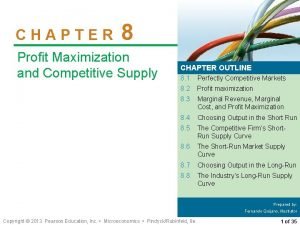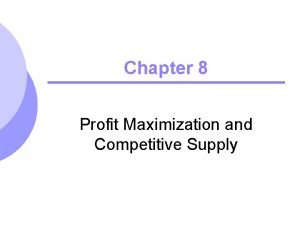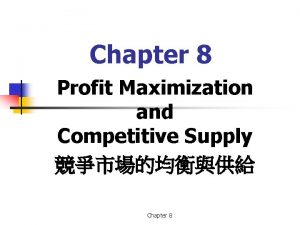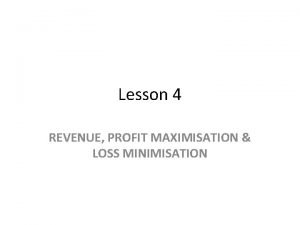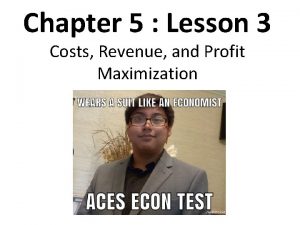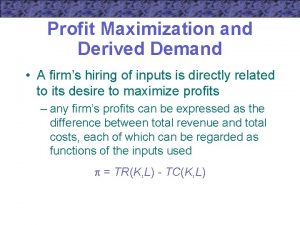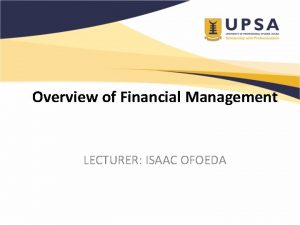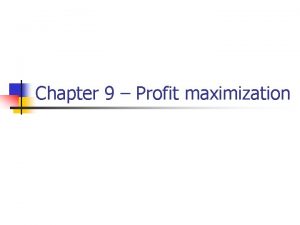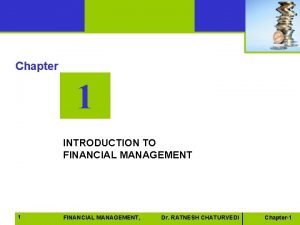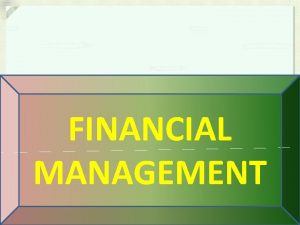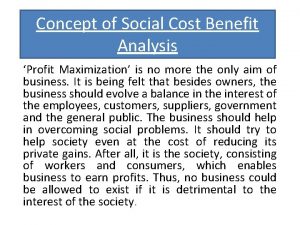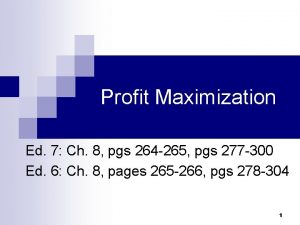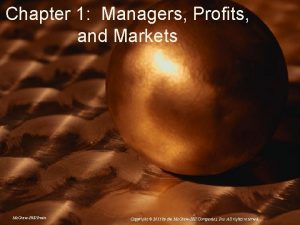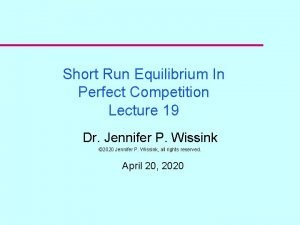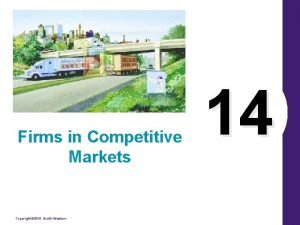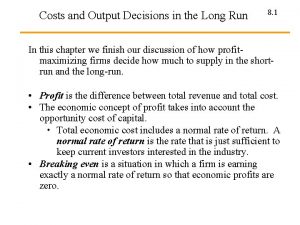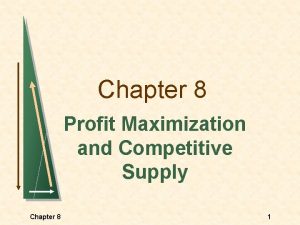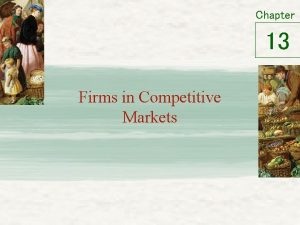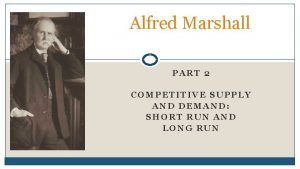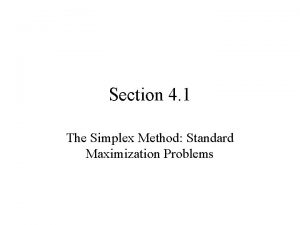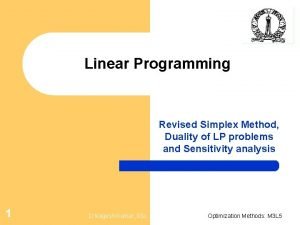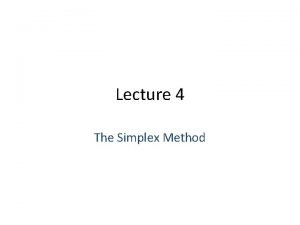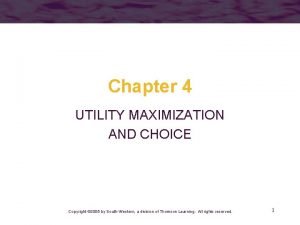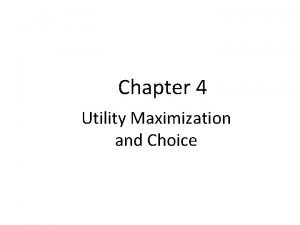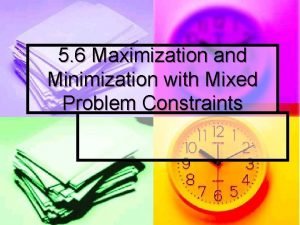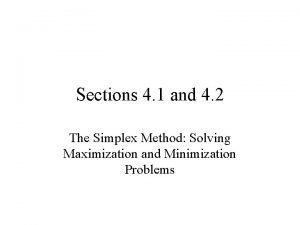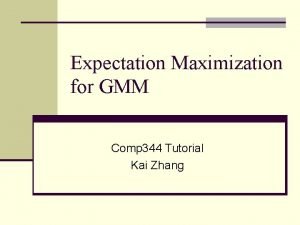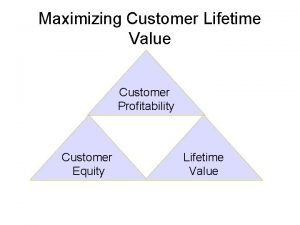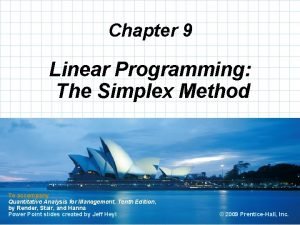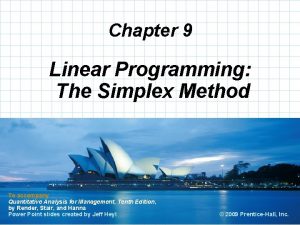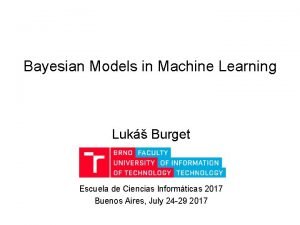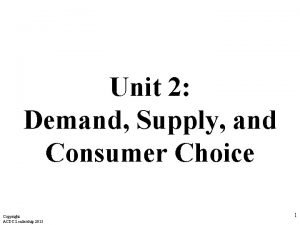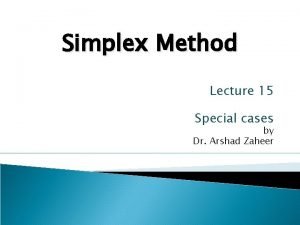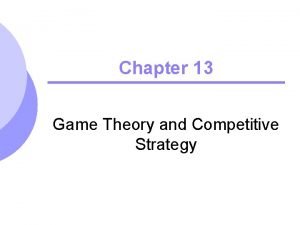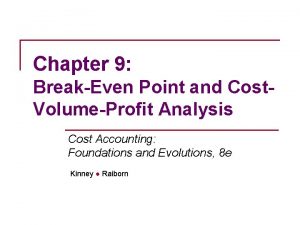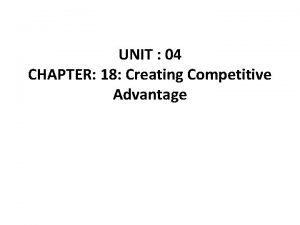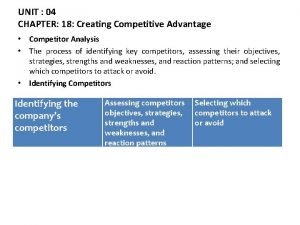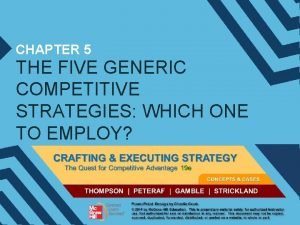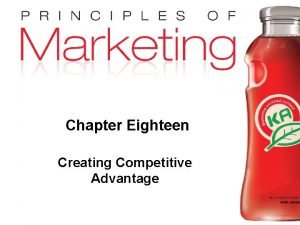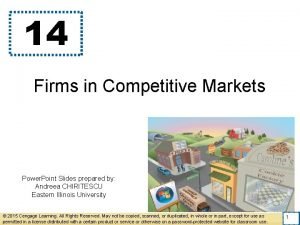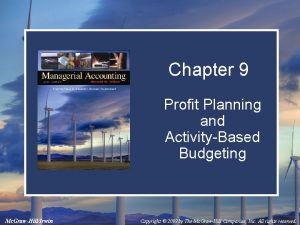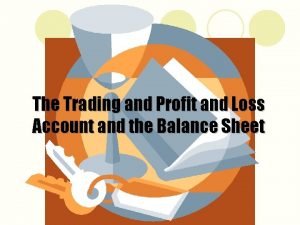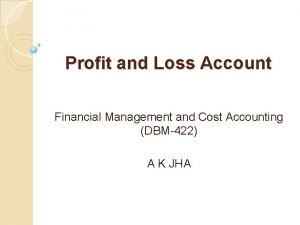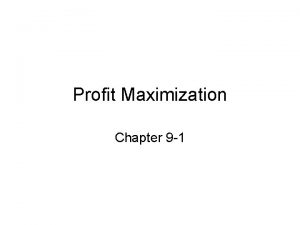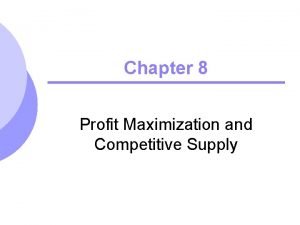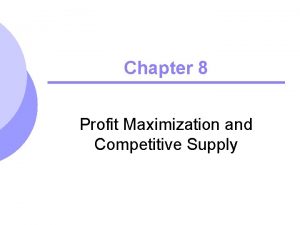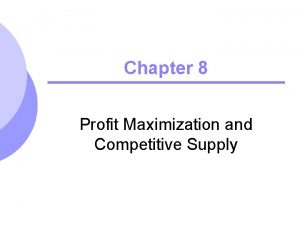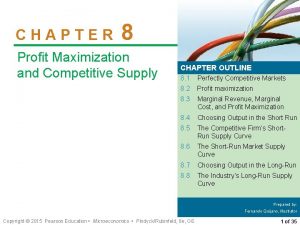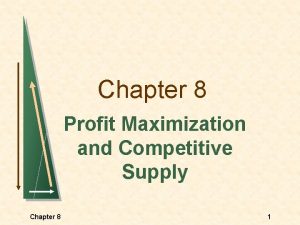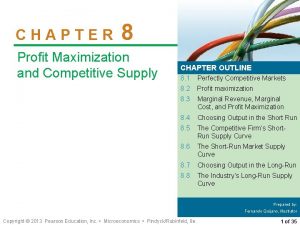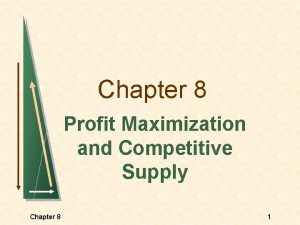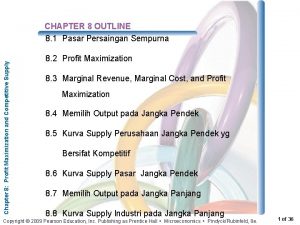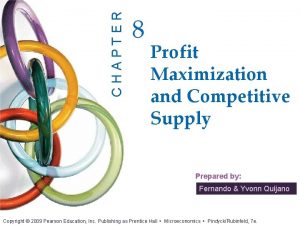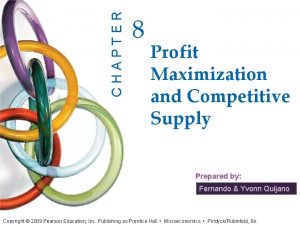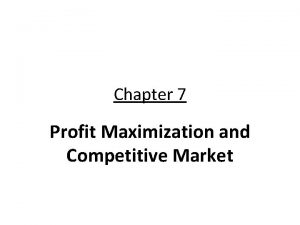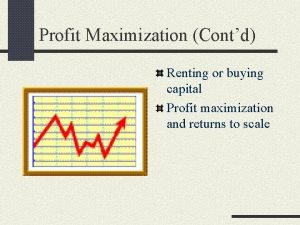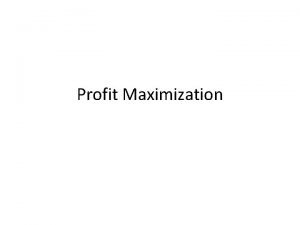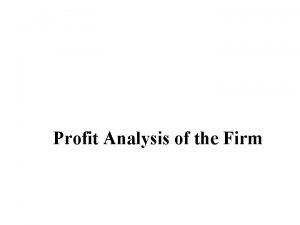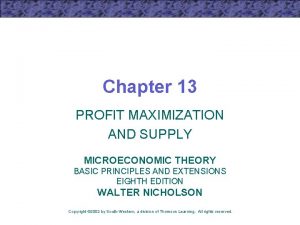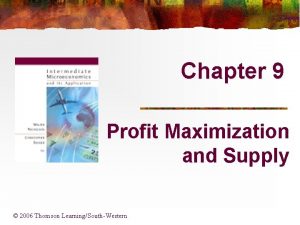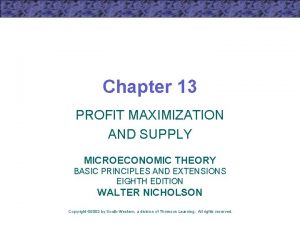Chapter 8 Profit Maximization and Competitive Supply Topics


























































- Slides: 58

Chapter 8 Profit Maximization and Competitive Supply

Topics to be Discussed l Perfectly Competitive Markets l Profit Maximization l Marginal Revenue, Marginal Cost, and Profit Maximization l Choosing Output in the Short-Run © 2005 Pearson Education, Inc. Chapter 8 2

Topics to be Discussed l The Competitive Firm’s Short-Run Supply Curve l Short-Run Market Supply l Choosing Output in the Long-Run © 2005 Pearson Education, Inc. Chapter 8 3

Perfectly Competitive Markets l The model of perfect competition can be used to study a variety of markets l Basic assumptions of Perfectly Competitive Markets 1. 2. 3. Price taking Product homogeneity Free entry and exit © 2005 Pearson Education, Inc. Chapter 8 4

Perfectly Competitive Markets 1. Price Taking m m m The individual firm sells a very small share of the total market output and, therefore, cannot influence market price. Each firm takes market price as given – price taker The individual consumer buys too small a share of industry output to have any impact on market price. © 2005 Pearson Education, Inc. Chapter 8 5

Perfectly Competitive Markets 2. Product Homogeneity m m The products of all firms are perfect substitutes. Product quality is relatively similar as well as other product characteristics Agricultural products, oil, copper, iron, lumber Heterogeneous products, such as brand names, can charge higher prices because they are perceived as better © 2005 Pearson Education, Inc. Chapter 8 6

Perfectly Competitive Markets 3. Free Entry and Exit m m m When there are no special costs that make it difficult for a firm to enter (or exit) an industry Buyers can easily switch from one supplier to another. Suppliers can easily enter or exit a market. l Pharmaceutical companies not perfectly competitive because of the large costs of R&D required © 2005 Pearson Education, Inc. Chapter 8 7

When are Markets Competitive l Few real products are perfectly competitive l Many markets are, however, highly competitive l No rule of thumb to determine whether a market is close to perfectly competitive © 2005 Pearson Education, Inc. Chapter 8 8

Profit Maximization l Do firms maximize profits? m Managers in firms may be concerned with other objectives l Revenue maximization l Revenue growth l Dividend maximization l Short-run profit maximization (due to bonus or promotion incentive) © 2005 Pearson Education, Inc. Chapter 8 9

Profit Maximization l Implications of non-profit objective m Over the long-run investors would not support the company m Without profits, survival unlikely in competitive industries l Managers have constrained freedom to pursue goals other than long-run profit maximization © 2005 Pearson Education, Inc. Chapter 8 10

Marginal Revenue, Marginal Cost, and Profit Maximization l We can study profit maximizing output for any firm whether perfectly competitive or not m Profit ( ) = Total Revenue - Total Cost m If q is output of the firm, then total revenue is price of the good times quantity m Total Revenue (R) = Pq © 2005 Pearson Education, Inc. Chapter 8 11

Marginal Revenue, Marginal Cost, and Profit Maximization l Costs of production depends on output m Total Cost (C) = Cq l Profit for the firm, , is difference between revenue and costs © 2005 Pearson Education, Inc. Chapter 8 12

Marginal Revenue, Marginal Cost, and Profit Maximization l Firm selects output to maximize the difference between revenue and cost l We can graph the total revenue and total cost curves to show maximizing profits for the firm l Distance between revenues and costs show profits © 2005 Pearson Education, Inc. Chapter 8 13

Marginal Revenue, Marginal Cost, and Profit Maximization l Revenue is curved showing that a firm can only sell more if it lowers its price l Slope in revenue curve is the marginal revenue l Slope of total cost curve is marginal cost © 2005 Pearson Education, Inc. Chapter 8 14

Marginal Revenue, Marginal Cost, and Profit Maximization l If the producer tries to raise price, sales are zero. l Profit is negative to begin with since revenue is not large enough to cover fixed and variable costs l Profit increases until it is maxed at q* l Profit is maximized where MR = MC or where slopes of the R(q) and C(q) curves are equal © 2005 Pearson Education, Inc. Chapter 8 15

Profit Maximization – Short Run Cost, Revenue, Profit ($s per year) Profits are maximized where MR (slope at A) and MC (slope at B) are equal C(q) A R(q) Profits are maximized where R(q) – C(q) is maximized B 0 q 0 © 2005 Pearson Education, Inc. q* Chapter 8 Output (q) 16

Marginal Revenue, Marginal Cost, and Profit Maximization l Profit is maximized at the point at which an additional increment to output leaves profit unchanged © 2005 Pearson Education, Inc. Chapter 8 17

Marginal Revenue, Marginal Cost, and Profit Maximization l The Competitive Firm m Price taker – market price and output determined from total market demand supply m Market output (Q) and firm output (q) m Market demand (D) and firm demand (d) © 2005 Pearson Education, Inc. Chapter 8 18

The Competitive Firm l Demand curve faced by an individual firm is a horizontal line m Firm’s sales have no effect on market price l Demand curve faced by whole market is downward sloping © 2005 Pearson Education, Inc. Chapter 8 19

The Competitive Firm Price $ per bushel Industry S $4 d $4 D 100 © 2005 Pearson Education, Inc. 200 Output (bushels) Chapter 8 100 Output (millions of bushels) 20

The Competitive Firm l The competitive firm’s demand m Individual producer sells all units for $4 regardless of that producer’s level of output. m MR = P with the horizontal demand curve m For a perfectly competitive firm, profit maximizing output occurs when © 2005 Pearson Education, Inc. Chapter 8 21

Choosing Output: Short Run l We will combine revenue and costs with demand to determine profit maximizing output decisions. l In the short run, capital is fixed and firm must choose levels of variable inputs to maximize profits. l We can look at the graph of MR, MC, ATC and AVC to determine profits © 2005 Pearson Education, Inc. Chapter 8 22

Choosing Output: Short Run l The point where MR = MC, the profit maximizing output is chosen m MR=MC at quantity, q*, of 8 m At a quantity less than 8, MR>MC so more profit can be gained by increasing output m At a quantity greater than 8, MC>MR, increasing output will decrease profits © 2005 Pearson Education, Inc. Chapter 8 23

A Competitive Firm MC Price Lost Profit for q 2>q* 50 A 40 AR=MR=P ATC AVC 30 q 1 : MR > MC q 2: MC > MR q 0: MC = MR 20 10 0 1 © 2005 Pearson Education, Inc. 2 3 4 5 6 Chapter 8 7 q 1 8 q* 9 q 2 10 11 Output 24

A Competitive Firm – Positive Profits Price 50 40 Profit per unit = PAC(q) = A to B MC Total Profit = ABCD A D AR=MR=P ATC 30 C Profits are determined by output per unit times quantity AVC B 20 10 0 1 © 2005 Pearson Education, Inc. 2 3 4 5 6 Chapter 8 7 q 1 8 q* 9 q 2 10 11 Output 25

The Competitive Firm l A firm does not have to make profits l It is possible a firm will incur losses if the P < AC for the profit maximizing quantity m Still measured by profit per unit times quantity m Profit per unit is negative (P – AC < 0) © 2005 Pearson Education, Inc. Chapter 8 26

A Competitive Firm – Losses MC Price B C D A q *: At MR = MC and P < ATC Losses = (PAC) x q* or ABCD P = MR AVC q* © 2005 Pearson Education, Inc. ATC Chapter 8 Output 27

Choosing Output in the Short Run l Summary of Production Decisions m Profit is maximized when MC = MR m If P > ATC the firm is making profits. m If P < ATC the firm is making losses © 2005 Pearson Education, Inc. Chapter 8 28

Short Run Production l Why would firm produce at a loss? m Might think price will increase in near future m Shutting down and starting up could be costly l Firm has two choices in short run m Continue producing m Shut down temporarily m Will compare profitability of both choices © 2005 Pearson Education, Inc. Chapter 8 29

Short Run Production l When should the firm shut down? m If AVC < P < ATC, the firm should continue producing in the short run m If AVC > P, the firm should shut-down. l Can © 2005 Pearson Education, Inc. not cover even its fixed costs Chapter 8 30

A Competitive Firm – Losses MC Price ATC Losses B C D P < ATC but ØAVC so firm will continue to produce in short run A P = MR AVC F E q* © 2005 Pearson Education, Inc. Chapter 8 Output 31

Competitive Firm – Short Run Supply l Supply curve tells how much output will be produced at different prices l Competitive firms determine quantity to produce where P = MC m Firm shuts down when P < AVC l Competitive firms supply curve is portion of the marginal cost curve above the AVC curve © 2005 Pearson Education, Inc. Chapter 8 32

A Competitive Firm’s Short-Run Supply Curve Price ($ per unit) The firm chooses the output level where P = MR = MC, as long as P > AVC. Supply is MC above AVC MC S P 2 ATC P 1 AVC P = AVC q 1 © 2005 Pearson Education, Inc. Chapter 8 q 2 Output 33

Short-Run Market Supply Curve l Shows the amount of product the whole market will produce at given prices l Is the sum of all the individual producers in the market l We can show graphically how we can sum the supply curves of individual producers © 2005 Pearson Education, Inc. Chapter 8 34

Industry Supply in the Short Run MC 1 $ per unit MC 2 MC 3 S The short-run industry supply curve is the horizontal summation of the supply curves of the firms. P 3 P 2 P 1 2 © 2005 Pearson Education, Inc. 4 5 7 8 10 Chapter 8 15 Q 21 35

The Short-Run Market Supply Curve l As price rises, firms expand their production l Increased production leads to increased demand for inputs and could cause increases in input prices l Increases in input prices cause MC curve to rise l This lowers each firm’s output choice l Causes industry supply to be less responsive to change in price than would be otherwise © 2005 Pearson Education, Inc. Chapter 8 36

Elasticity of Market Supply l Elasticity of Market Supply m Measures the sensitivity of industry output to market price m The percentage change in quantity supplied, Q, in response to 1 -percent change in price © 2005 Pearson Education, Inc. Chapter 8 37

Elasticity of Market Supply l When MC increase rapidly in response to increases in output, elasticity is low l When MC increase slowly, supply is relatively elastic l Perfectly inelastic short-run supply arises when the industry’s plant and equipment are so fully utilized that new plants must be built to achieve greater output. l Perfectly elastic short-run supply arises when marginal costs are constant. © 2005 Pearson Education, Inc. Chapter 8 38

Producer Surplus in the Short Run l Price is greater than MC on all but the last unit of output. l Therefore, surplus is earned on all but the last unit l The producer surplus is the sum over all units produced of the difference between the market price of the good and the marginal cost of production. l Area above supply to the market price © 2005 Pearson Education, Inc. Chapter 8 39

Producer Surplus for a Firm Price ($ per unit of output) MC Producer Surplus AVC B A P At q* MC = MR. Between 0 and q , MR > MC for all units. Producer surplus is area above MC to the price q* © 2005 Pearson Education, Inc. Chapter 8 Output 40

The Short-Run Market Supply Curve l Sum of MC from 0 to q*, it is the sum o the total variable cost of producing q* l Producer Surplus can be defined as difference between the firm’s revenue and it total variable cost l We can show this graphically by the rectangle ABCD m Revenue (0 DCq*) © 2005 Pearson Education, Inc. (0 ABq*) minus variable cost Chapter 8 41

Producer Surplus for a Firm Price ($ per unit of output) MC Producer Surplus AVC B A D P C q* © 2005 Pearson Education, Inc. Chapter 8 Producer surplus is also ABCD = Revenue minus variable costs Output 42

Producer Surplus versus Profit l Profit is revenue minus total cost (not just variable cost) l When fixed cost is positive, producer surplus is greater than profit © 2005 Pearson Education, Inc. Chapter 8 43

Producer Surplus versus Profit l Costs of production determine magnitude of producer surplus m Higher costs firms have less producer surplus m Lower cost firms have more producer surplus m Adding up surplus for all producers in the market given total market producer surplus m Area below market price and above supply curve © 2005 Pearson Education, Inc. Chapter 8 44

Producer Surplus for a Market Price ($ per unit of output) S Market producer surplus is the difference between P* and S from 0 to Q*. P* Producer Surplus D Q* © 2005 Pearson Education, Inc. Chapter 8 Output 45

Choosing Output in the Long Run l In short run, one or more inputs are fixed l In the long run, a firm can alter all its inputs, including the size of the plant. l We assume free entry and free exit. © 2005 Pearson Education, Inc. Chapter 8 46

Choosing Output in the Long Run l In the short run a firm faces a horizontal demand curve l The short-run average cost curve (SAC) and short run marginal cost curve (SMC) are low enough for firm to make positive profits (ABCD) l The long run average cost curve (LRAC) m Economies of scale to q 2 m Diseconomies of scale after q 2 © 2005 Pearson Education, Inc. Chapter 8 47

Output Choice in the Long Run Price LMC LAC SMC SAC $40 D A P = MR C B $30 In the short run, the firm is faced with fixed inputs. P = $40 > ATC. Profit is equal to ABCD. q 1 © 2005 Pearson Education, Inc. Chapter 8 q 2 q 3 Output 48

Output Choice in the Long Run In the long run, the plant size will be increased and output increased to q 3. Long-run profit, EFGD > short run profit ABCD. Price LMC LAC SMC SAC $40 D A P = MR C B G $30 q 1 © 2005 Pearson Education, Inc. Chapter 8 F q 2 q 3 Output 49

Long-Run Competitive Equilibrium l For long run equilibrium, firms must have no desire to enter or leave the industry l We can relative economic profit to the incentive to enter and exit the market l Need to relate accounting profit to economic profit © 2005 Pearson Education, Inc. Chapter 8 50

Long-run Competitive Equilibrium l Accounting profit m Difference between firm’s revenues and direct costs l Economic profit m Difference between firm’s revenues and direct and indirect costs m Takes into account opportunity costs © 2005 Pearson Education, Inc. Chapter 8 51

Long-run Competitive Equilibrium l Firm uses labor (L) and capital (K) with purchased capital l Accounting Profit & Economic Profit profit: = R - w. L m Economic profit: = R = w. L - r. K m Accounting l wl = labor cost l rk = opportunity cost of capital © 2005 Pearson Education, Inc. Chapter 8 52

Long-run Competitive Equilibrium l Zero-Profit m. A firm is earning a normal return on its investment m Doing as well as it could by investing its money elsewhere m Normal return is firm’s opportunity cost of using money to buy capital instead of investing elsewhere m Competitive market long run equilibrium © 2005 Pearson Education, Inc. Chapter 8 53

Long-run Competitive Equilibrium l Zero Economic Profits m If R > w. L + rk, economic profits are positive m If R = w. L + rk, zero economic profits, but the firms is earning a normal rate of return; indicating the industry is competitive m If R < wl + rk, consider going out of business © 2005 Pearson Education, Inc. Chapter 8 54

Long-run Competitive Equilibrium l Entry and Exit m The long-run response to short-run profits is to increase output and profits. m Profits will attract other producers. m More producers increase industry supply which lowers the market price. m This continues until there are no more profits to be gained in the market – zero economic profits © 2005 Pearson Education, Inc. Chapter 8 55

Long-Run Competitive Equilibrium – Profits • Profit attracts firms • Supply increases until profit = 0 $ per unit of output Firm Industry S 1 LMC $40 LAC P 1 S 2 P 2 $30 D q 2 © 2005 Pearson Education, Inc. Output Chapter 8 Q 1 Q 2 Output 56

Long-Run Competitive Equilibrium 1. All firms in industry are maximizing profits m MR = MC 2. No firm has incentive to enter or exit industry m Earning zero economic profits 3. Market is in equilibrium m QD = QD © 2005 Pearson Education, Inc. Chapter 8 57

Firms Earn Zero Profit in Long-Run Equilibrium Ticket Price LMC LAC A baseball team in a moderate-sized city sells enough tickets so that price is equal to marginal and average cost (profit = 0). $7 1. 0 © 2005 Pearson Education, Inc. Chapter 8 Season Tickets Sales (millions) 58
 Profit maximization and competitive supply
Profit maximization and competitive supply Profit maximizing output
Profit maximizing output Competitive supply
Competitive supply Perfectly competitive firm profit maximization
Perfectly competitive firm profit maximization Lesson 3 cost revenue and profit maximization
Lesson 3 cost revenue and profit maximization Monopsony profit maximization
Monopsony profit maximization Limitations of profit maximization
Limitations of profit maximization Profit
Profit Module 53 featured worksheet profit maximization
Module 53 featured worksheet profit maximization Dr sudhindra bhat
Dr sudhindra bhat Financial management meaning
Financial management meaning Abt model of social accounting
Abt model of social accounting Marginal revenue
Marginal revenue Profit maximization
Profit maximization Chapter 5 competitive rivalry and competitive dynamics
Chapter 5 competitive rivalry and competitive dynamics Competitive and non competitive antagonist
Competitive and non competitive antagonist The two least common competitive structures are
The two least common competitive structures are Economic profit vs accounting profit
Economic profit vs accounting profit Post acquisition profit is which profit
Post acquisition profit is which profit Chapter 5 section 1 supply
Chapter 5 section 1 supply Short run supply curve for a perfectly competitive firm
Short run supply curve for a perfectly competitive firm Short run supply curve for a perfectly competitive firm
Short run supply curve for a perfectly competitive firm Short run supply curve for a perfectly competitive firm
Short run supply curve for a perfectly competitive firm Competitive supply
Competitive supply Perfectly competitive short run supply curve
Perfectly competitive short run supply curve Competitive supply
Competitive supply Matching supply with demand
Matching supply with demand Standard maximization problem
Standard maximization problem Dual simplex method example
Dual simplex method example Slack constraint
Slack constraint Utility maximization problem
Utility maximization problem Interior optimum for utility maximization
Interior optimum for utility maximization Big m method minimization example
Big m method minimization example Kalkulator metode simpleks
Kalkulator metode simpleks Expectation maximization tutorial
Expectation maximization tutorial Maximizing customer lifetime value
Maximizing customer lifetime value Chapter 9 linear programming
Chapter 9 linear programming The zj row in a simplex table for maximization represents
The zj row in a simplex table for maximization represents Expectation maximization algorithm
Expectation maximization algorithm Utility maximization
Utility maximization Simplex method unbounded solution
Simplex method unbounded solution Chapter 13 game theory and competitive strategy
Chapter 13 game theory and competitive strategy Break even sales dollars
Break even sales dollars Ano ang ratio ng elastisidad
Ano ang ratio ng elastisidad Value creation strategy
Value creation strategy Chapter 18 creating competitive advantage
Chapter 18 creating competitive advantage Chapter 5 the five generic competitive strategies
Chapter 5 the five generic competitive strategies Chapter 2 strategic planning for competitive advantage
Chapter 2 strategic planning for competitive advantage Chapter 18 creating competitive advantage
Chapter 18 creating competitive advantage Firms in competitive markets chapter 14 ppt
Firms in competitive markets chapter 14 ppt Chapter 18 creating competitive advantage
Chapter 18 creating competitive advantage Assumptions of cvp analysis
Assumptions of cvp analysis Direct materials budget
Direct materials budget Chapter 9 topics in analytic geometry
Chapter 9 topics in analytic geometry Trading profit and loss account vertical format
Trading profit and loss account vertical format Departmental accounting helps in
Departmental accounting helps in Errors affecting the trial balance
Errors affecting the trial balance Diff between trading account and profit and loss account
Diff between trading account and profit and loss account 5 determinants of supply
5 determinants of supply
